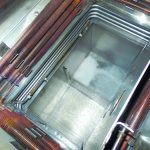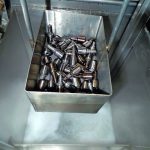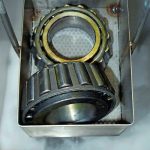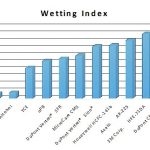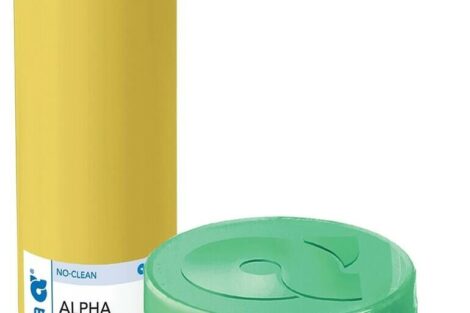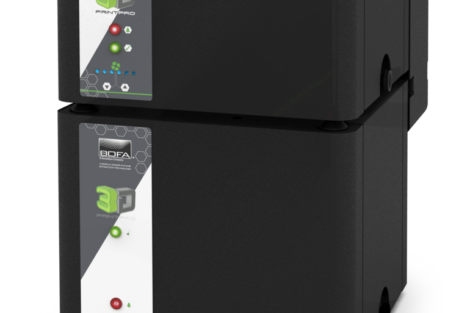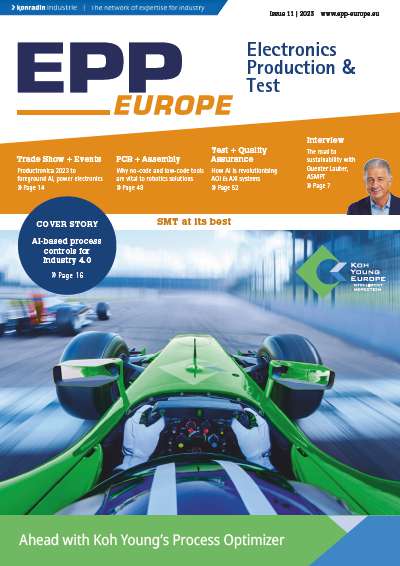Critical cleaning processes are found in many industries. But one common characteristic that defines “critical cleaning” is the recognition that if the process is not done properly the product simply will not function reliably. If the cost of a cleaning failure is high, then it’s a mission-critical application. Here, we provide a lock at the landscape of challenging cleaning processes.
Mike Jones, VP MicroCare Corporation, New Britain/CT, USA
As a general trend across many industries, components and devices are getting smaller, capabilities are getting greater, and tolerances are getting tighter. Just one example: the first PC disk drives held 10 MBytes, but now terabyte capabilities are the norm. That’s a one million percent increase in thirty years. And in the disk drive industry cleaning processes are ever-more critical. In general, there is need to constantly improve cleaning processes while juggling product upgrades, cost reductions and aggressive competition. If that’s not tricky enough, there are further restrictions due to environmental concerns, new regulatory requirements and pressures for a healthy workplace. So it becomes clear that these three conflicting trends — the miniaturization of components with the related increase in performance; the unflagging need to protect people and the environment; and the economic drivers of reducing costs while boosting quality — combined make any cleaning decision difficult. So the key question is: how do you adapt critical cleaning processes when some outside force such as technology change, regulatory change, competitive threat or whatever mandates a change from your current techniques?
Be ready to adapt
Implementing change in a living, breathing factory is never easy and it is never going to be simple. Today most companies use water-based processes for the bulk of their cleaning applications but a number of factors suggest water cleaning is looking like an increasingly troubled proposition and solvent-base methods seem to be the future-forward choice. Why? Because in an increasingly dynamic and complicated market the “prime directive” must be to select the most flexible, versatile option. Versatile and flexible technologies should be prized above all else. Rigid processes, however smart they may have been at the time of selection, lock a factory into fixed answers. A company may be the leader with today’s products, but when change hits it will be the small and nimble competitors that will survive. Vapor degreasing is a choice you should consider because it is the “small and nimble” critical cleaning option.
Many companies have renewed their interest in the benefits of vapor degreasing. In the electronics industry, the cleaning of ever-denser chip and PCB configurations is very difficult. In the hard-disk drive industry, hydrocarbon contamination is being driven down to levels considered impossible a decade ago. Every player in these advanced industries knows that improved cleaning makes for better, faster and more reliable products. Vapor degreasing is a simple process that uses sophisticated, “low-boiling” chemistry to remove contamination. This is a closed-loop procedure with recycling inherent. Vapor degreasers are small, fast, highly cost-effective and — most importantly — extremely flexible.
The concept behind vapor degreasing is simple. The system boils a cleaning liquid into a vapor, contains the vapors totally inside the system, cools the vapors back into a liquid, and collects this purified liquid for re-use. The boiling takes place at a low temperature (usually slightly above room temperature) and needs very little electricity. Low-boiling solvents have multiple chemical properties that are advantageous to critical cleaning. They usually have a very low surface tension and a very low viscosity, so the fluids easily clean even the tightest of spaces and under the smallest of parts (low stand-off). Most vapor degreasing fluids also are very heavy and dense, typically 20–40 % heavier than water, which aids in dislodging particulate from the components. Because the solvent is engineered for the application delicate parts are easily cleaned and dried. It is possible to combine all these factors into a “wetting index” that permits apple-to-apple comparisons.
Vapor degreasing systems usually work vertically, with the rinsing and drying processes taking place above the cleaning tanks. This consumes very little floor space and cuts energy usage, and can be a substantial cost savings as the foot-print on the shop floor is pricey. The systems can be extremely cost-effective because the solvent is re-used indefinitely. In effect, each vapor degreaser is a recycling system. Reusing the solvent is the heart and soul of how the machine works. This is in bright contrast with the “pump and dump” processes of many water-based cleaners.
There are more than a dozen manufacturers of vapor degreasers world-wide. Numerous equipment options make vapor degreasing even simpler and faster. The solvent tank can be fitted with filtration systems to remove insoluble contamination (particulate). Another option is for the system to be fitted with ultrasonics to enhance cleaning. Automated hoists free operators from the tedium of lifting parts in and out of the system. “Super heat” and external distillation are other money-saving, performance-enhancing choices. Depending on the application and process requirements, the largest parts and highest volumes can be handled. The machines, when properly designed, equipped and configured, out-perform the efficiency of any other cleaning technology.
Aqueous allure
The most common alternative to solvent cleaning is to use water. Water cleaning is not, on the face of it, a bad idea. For non-critical applications it can work quite nicely because water cleaning uses the kinetic energy of pumps and sprays to “power-wash” contamination from surfaces. Intuitively, water also seems like it would be an environmentally-friendly option. However, there are a number of reasons why the advantages do not always materialize as expected.
Every aqueous system needs heat to clean. While it takes 8,340 BTUs (non-ISO unit British Thermal Unit, equates here to about 2.44 kWh) to boil a gallon of water, it takes only 1,000 BTUs (0.3 kWh) to boil a gallon of solvent. So, as a general rule, aqueous cleaners will consume eight times more energy than a vapor degreaser for the same quantity of parts. Here’s the rub: the burning of fossil fuels to generate all that electricity is one of the primary sources of global warming.
Another issue is the difficulty of miniature parts. Small, delicate components can be a challenge to clean in a rough-and-tumble aqueous system. Plus, because of the nature of the water molecule as they often cannot get easily into the tight spaces or small apertures. This mean those hard-to-reach locations are not properly wetted and so they are not sufficiently cleaned. See chart to compare the wetting index of water to a grab-bag of popular solvents. Filtration is problematic with water-based cleaning systems as well, because water does not easily traverse 2 or 3 micron filters. The only way to deliver micron-grade filtration is with energy-hungry pumps to force the water through the filter.
Drying is another complexity. After water cleaning, drying requires additional steps and energy (heaters, blowers and air knives). If bacterial growth is a problem, the process controls required to eliminate bio-burden add significantly to the complexity and costs of an aqueous cleaner.
In terms of waste treatment, most aqueous systems require pre-treatment of their incoming water which needs electricity. These systems also produce a waste stream that involves treatment before discharge, further exacerbating the electrical issue. Lastly, aqueous systems add humidity and heat to the rooms in which they operate, placing a burden on the air conditioning system and increasing energy consumption. And aqueous cleaning processes usually operate horizontally so the systems have a large footprint, require more space and using more electricity.
Selection guidelines
Advances in solvent technology are pouring onto the market. Chemours (Dupont spin-off), 3M, Honeywell, MicroCare, Solvay and others all are commercializing environmentally innovative cleaning fluids that perform very well. In fact, many companies are rediscovering that a properly configured vapor degreaser using advanced fluids can be very gentle on the planet and yet deliver consistent and reliable cleaning, often with the lowest overall costs.
Cleaning systems are a “bet your business” decision (or at least a “bet your career”). It is essential that the choice be based on a thorough understanding of the inputs and outputs. The first and most important input is the contamination. Engineers need to completely understand source, characteristics and behavior of the contamination they are trying to remove. For example, traditional rosin fluxes used on circuit boards require very different cleaning chemistries than today’s lead-free fluxes and pastes.
Cleaning formulation suppliers make it easy to test fluids as this usually requires a standardized sample of contaminated parts and sending them to the chemical company’s lab. They will suggest the optimal cleaning process. Any quality vendor should be willing and able to perform a modest amount of testing. The vendor should provide a detailed written report and often will perform these services free of charge. It goes without saying: decisions involving chemistry, equipment and processes all need to be made concurrently. These decisions cannot be made separately. Trying to fix a cleaning process after an inappropriate selection will be daunting, slow and expensive. The chemistry, equipment and processes must all be harmonized together like instruments in an orchestra.
In a nutshell: Three significant trends are at work across the electronics industry: the continued miniaturization of devices, the need to protect people and the environment, and to minimize production costs while boosting quality and reliability. To adapt to this changing demands, the most versatile, low-risk option that meets all the critical requirements is solvent cleaning using a vapor degreasing process.
productronica, booth A4-101
Share:



